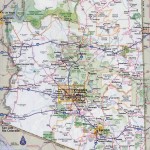Confession: I love a good princess story. When work and professional reading make my heart heavy, I’ve found that sometimes light reading is just the ticket to resurfacing out of the gloom. I recently read a short story by Cameron Dokey, who has written refreshed versions of classic fairy tales. In her version of “Rapunzel” the main character, the real Rapunzel, is tasked with freeing the beautiful blonde from the tower. The blonde has been cursed and living in a dream-like state for an untold number of years, unaware of the passage of time. She must wake up in order to break the curse, leave her tower, and find true love. Rapunzel has very little patience with this blonde who is grappling with the unpleasant reality she’s facing and the loss of her expectation of being rescued by a knight in shining armor. She is having a hard time realizing that in order to leave her tower she is going to have to work hard. She says, “waking up is hard work. Harder than I thought it would be. I was picturing—oh, I don’t know—something more glamorous and a whole lot easier I suppose.”
This line struck me because while I admit to indulging in reading fairy tales, I have also been doing a lot of heavy professional reading. I have been reading not one, but three books on racism. I’ve recently finished reading “Culturally Responsive Teaching and the Brain” by Zaretta Hammond as a way to be more aware of (in)equitable treatment that our students receive. As part of my work with the Teacher Solutions Team at the AZK12 Center, I’ve also been participating in a book study. We’ve been delving into equity and I’ve just finished reading Glenn Singleton’s “Courageous Conversations About Race” and Dr. Robin DiAngelo’s “White Fragility” both of which describe systemic racism that is embedded within our society, culture, media, and schools. One of Singleton’s main points is to stress that “educators need to address their own racial attitudes, beliefs, and expectations as they relate to their students of color and indigenous students as well as their White students. …Educators cannot effectively consider their students’ racial beliefs, attitudes, and behaviors before they have carefully investigated their own.”
The term “woke” has been used to describe a White person who had been made aware of racism. I have considered myself “woke” for years now. I’ve read critical race theory, written my racial autobiography, examined my own religious and cultural conditioning around race, and actively work to bring greater equity to my school.
But as the blonde in the tower said, “waking up is hard to do.” I don’t think any of us are done being “woke.” The process of raising our racial consciousness is not easy. Seeing ourselves as part of an unjust system and recognizing the ways we’ve unconsciously perpetuated racism is painful. The process is also never ending because the ways each of experiences race varies so widely. Listening to and validating each other’s stories (especially when they are very different from our own) is a life-long effort. It is a challenge to develop greater understanding of group identity (our own as well as others) while at the same time resisting the temptation to make assumptions or give in to stereotypes. The constant tension between group identity and individual identity means that we will never be done raising our racial consciousness, nor will we ever be done dismantling racism.
Yes, waking up is hard to do. But the alternative—hiding ourselves away and turning our backs from the truth in order to protect a fantasy—that won’t bring a happily ever after.









